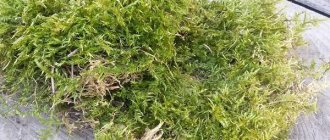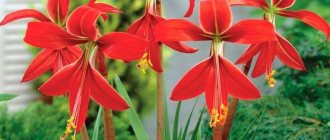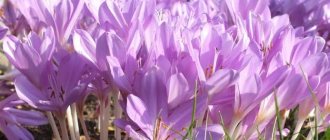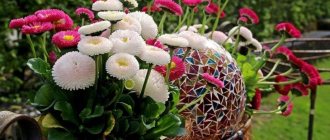Author: Elena N. https://floristics.info/ru/index.php?option=com_contact&view=contact&id=19 Category: Houseplants Published: February 24, 2019Last edits: January 11, 2021
- Growing from seeds
- Monstera turns yellow
- Monstera deliciosa, or attractive (Monstera deliciosa)
Monstera is an old favorite of ours. This luxurious plant can enhance any interior. Even its notoriety does not hinder the growth of its popularity: superstitious people consider the monstera to be an energy vampire that attracts misfortune to the house.
The reason for these speculations is the aerial roots of the plant, which in nature sometimes form entire thickets. And also fruits that leave your mouth feeling like the pricks of many needles. But at home, Monstera does not bloom, so it does not form fruits.
- What conditions does Monstera need for growth and development?
- How to grow monstera at home?
- How to transplant and reproduce it?
You will find answers to these and other questions in our article.
Planting and caring for monstera
- Flowering: the plant is grown as an ornamental foliage plant.
- Lighting: bright diffused light or partial shade.
- Temperature: in summer – normal for residential premises, in winter – 12-14 ˚C.
- Watering: regular and plentiful: the substrate should be slightly moist all the time.
- Humidity: high. It is recommended to regularly spray and wash the leaves with a damp sponge.
- Feeding: from March to August twice a month with complex mineral fertilizer for decorative deciduous plants; during the rest of the year, Monstera does not need fertilizing.
- Rest period: not clearly expressed.
- Transplantation: young plants are replanted annually, four-year-old plants - once every 2-3 years, old ones - once every five years, but the top layer of substrate up to 5 cm thick must be changed in pots of large plants annually.
- Garter: the vine is tied to a support dug into the potting soil - a ladder, a tube filled with moss or an artificial trunk wrapped in copra.
- Reproduction: sometimes by seeds, but more often vegetatively (cuttings and shoots).
- Pests: ivy scale insects, thrips, mealybugs and spider mites.
- Diseases: sooty fungus, stem rot.
Read more about growing monstera below.
plant (lat. Monstera) is a large vine and belongs to the Araceae family. In nature, monstera flowers grow in the tropical forests of the equatorial regions of Central and South America from the Yucatan Peninsula and Mexico in the north to Brazil in the south. At the end of the 18th century, the monstera flower was introduced to Asia, and then spread throughout Europe and Australia. I would like to believe that the name Monstera comes not from the Latin word Monstrum, meaning monster, but from monstrosus, which means “amazing, bizarre,” but the myths that haunt the plant cast doubt on this.
- Gerbera: home care
European explorers of the South American tropics were not so much surprised by the tree as they were frightened: the monstera vine is of such impressive size that it looks intimidating. And where fear arises, legends are born, for example, that the monstera is an energy vampire, that the roots of the monstera entangle the victim and strangle him, and all that. Let’s not retell fables, but rather let’s talk about what the monstera indoor flower actually is in modern floriculture.
How to propagate a “monster”?
Monstera is really very popular, so be prepared for the fact that you will soon be asked to give a shoot of this miracle, or you yourself will want to increase the number of “monsters” in your apartment. It's very easy to do.
Monstera propagation by cuttings or aerial roots follows the same, completely uncomplicated, scenario:
- separate a lateral shoot or aerial root from the plant;
- cover the fresh cut with charcoal and let it dry a little;
- plant the shoot in a pot;
- cover it all with a glass jar on top to create greenhouse conditions;
- Water your baby regularly;
- After the shoot takes root, the jar can be removed.
Plant cuttings
Propagating monstera with aerial roots is easy.
The plant has taken root
That's all! The operation is completed, you can dance and drink champagne. And it’s not difficult at all, right?
Botanical description
So, the indoor monstera is an evergreen plant, a long-time favorite of gardeners who appreciate its exotic beauty and ease of care. Monstera at home grows to four meters in length, literally within 5-6 years, but since the plant is a vine, it needs stable support. In addition, using a support is very convenient, since a large monstera takes on the shape of a tree and takes up less space, and also looks more impressive. Carved monstera leaves reach a diameter of 45 cm, and young leaves are whole, but over time holes appear in them, and the larger the leaves become, the more slits there are in them.
In addition to the ordinary roots with which in nature the vine grows as an epiphyte to a tree, the aerial roots of the monstera are also of great importance, reaching right down to the ground and feeding the plant from the soil. Monstera blooms in the same way as other araceae, with an inflorescence similar to an ear of corn wrapped in a blanket. The monstera fruit is a berry about 20 cm long with a banana-pineapple flavor. By the way, in Australia, monstera is bred precisely for its nutritious and tasty fruits. But a monstera grown indoors is unlikely to be able to treat you to a delicious fruit, since monstera blooms infrequently at home.
Lighting
Have you thought about how to grow a monstera flower? How to care for it so that it pleases the eye with its beautiful green leaves? Monstera is a light-loving plant, so for full growth it will need a well-lit place, but it is better to avoid direct sunlight. A flowerpot with a flower should be placed in a room whose windows face south, west or east. It is highly not recommended to keep it in the northern part of the building. It is worth choosing the most illuminated area of the room. If the flower does not get enough light, the leaves will begin to noticeably become smaller, and the aerial roots will become weak and thin.
Monstera - can you keep it at home?
Readers sometimes ask why Monstera cannot be kept at home. And really - why? I don’t know who and when examined the monstera for the presence of vampire properties or toxins, but personally I didn’t notice anything like that in it. The only factor that makes you think about whether to keep a monstera in the house is its size. A beautifully formed monstera tree grew in my house for several years, until I had to part with it because it, and not me, became uncomfortable - the monstera no longer had enough space in my modest apartment.
I gave the plant, which had become too large, to my friend, and she placed it in the lobby of her restaurant, which the monstera still decorates to this day. But if you are sure that keeping a monstera in the house is harmful, well... there are many other plants that are no worse. Well, for those who, like me, believe that Monstera can be kept at home, I recommend, just in case, not to place it in the bedroom or nursery.
Peculiarities
All varieties of monstera have similar recognizable characteristics:
- The foliage on one specimen has a different shape: in young ones it is whole, in more mature ones it is dissected or perforated. This feature is called heterophyly (various leaves);
- The plant “cries” before the rain , dropping drops of moisture from the leaves. The phenomenon is explained by the fact that monstera removes excess liquid when there is excess air humidity through special holes at the ends of the veins - hydotodes. It is believed that this interesting property of vines can be used to predict the weather;
- At the base of the monstera leaf, aerial roots often grow , which help the plant absorb nutrients and water;
- If the flower grows in conditions that are comfortable for it, it is able to bloom, producing a white-light green inflorescence with a spadix flower inside. Externally, this flower looks like a spathiphyllum. Sometimes fruit-cobs may be set.
Monstera should not be kept in the bedroom.
Caring for Monstera at home
Growing conditions
Monstera is unpretentious, and caring for it is not burdensome. If you want the leaves of the plant to be decorated with fancy holes and slits, provide it with bright, diffused light. As a last resort, keep it in partial shade, but full shade will not benefit the decorative qualities of the plant. In summer, the monstera will be satisfied with the usual temperature for this time of year, but in winter it is advisable to give it a break from intensive growth and provide coolness - 12-14 ºC. Protect the plant from drafts and sudden temperature changes.
- Pruning plants (Part 1): is it necessary to prune? Why trim?
The soil of Monstera should always be slightly moist, and watering should be carried out based on this principle. If the monstera is in a room with central heating in winter and a temperature that is comfortable for you and not for her, then you will have to water the plant as often as in the summer. But if you place it in a cool room, then watering can be reduced. Water for humidification is used that is settled or filtered, without any admixture of lime.
High air humidity is very important for Monstera, so be prepared to frequently spray and wash the leaves of the plant in the warm season, but if you suddenly notice spots of moisture under the Monstera pot, this is a sign for you that you have overdone it with moisturizing the leaves. This ability to remove excess moisture through the leaves is called guttation. The monstera usually “gots” before rain or when the air in the room is too humid, which is why the monstera is popularly called a crybaby. In winter, replace leaf spraying with hygienic dusting and polishing of leaf plates.
Fertilizer
In the warm season, from March to August, Monstera is fed twice a month with Agricola, Nitrophoska, Seramis, Effecton or other complex fertilizer for decorative foliage plants. As soon as it gets cool, fertilizing is stopped and resumed only at the beginning of the next growing season.
Transfer
Young monstera specimens are replanted annually, those that have reached four years of age - once every 2-3 years, adult monsteras are replanted once every five years, but the top layer of soil (about 2.5 cm) must be replaced with fresh substrate annually. You need to take a larger pot for the monstera, as they say, “for growth,” since the monstera grows very quickly. The soil should be loose, light, but fertile, as for violets, for example.
The composition can be approximately this: two parts of turf soil and one part each of peat, perlite (or coarse sand), humus (or leaf soil). Experts suggest adding sphagnum, bark and charcoal to the substrate. Of the ready-made soils for Monstera, “Terra” or a mixture for palm trees is suitable. How to transplant a monstera? A thick layer of drainage is placed in the pot, then the Monstera root ball is carefully transferred and the container is supplemented with the required amount of substrate.
Monstera support
Since Monstera is a large vine, in adulthood it will need support - a wooden or plastic ladder, an artificial trunk wrapped in copra, but it is best to use tubes with holes for this purpose: the cavity of the tube is filled with moss, which is kept wet all the time, which will give additional moisture to adventitious roots. Try to direct the ends of the aerial roots into the holes of the tube - this will provide the plant, in addition to moisture, stability.
The soil
For planting, monsteras use a mixture of garden soil with peat, sand and compost (3:1:1:1). Sand can be replaced with vermiculite or perlite. Be sure to lay a layer of drainage (expanded clay) on the bottom of the container.
You can use other soil mixtures for planting. It is important that they are sufficiently nutritious, loose and retain moisture well. A mixture of garden soil, humus, sand and peat in equal parts gives good results. And here is another soil composition suitable for the plant in the ratio 3:1:1:1:1:
- Turf land;
- Leaf soil;
- Humus;
- Peat;
- Baking powder.
Similar articles:
- Methods for propagating monstera at home
The easiest way is to purchase soil for this plant in specialized stores . There you can always find an earthen mixture for monstera, which contains all the components necessary for the growth and development of this vine.
Monstera reproduction
Monstera reproduces by seed and vegetative methods.
- Beautiful photos of croton leaves
Growing from seeds
How to propagate monstera by seed? Moist sphagnum moss is placed in ziplock bags, seeds are added, the remaining volume is filled with air and the zipper is closed. The percentage ratio is approximately this: 5% moss with seeds, 95% air. Crops are kept in a bright and warm (25-28 ºC) room. Shoots appear in two weeks or a month, and after the seedlings develop two leaves, they are planted in containers with a substrate of the following composition: one part each of sand, leaf and turf soil. Seedlings are grown at a temperature of 25 ºC in bright diffused light, transplanted into a new pot every year.
Propagation by cuttings and shoots
How does monstera reproduce besides the seed method? After all, its seeds do not have good germination, and it takes a very long time for Monstera to grow from seeds. That is why amateur flower growers prefer a faster and more reliable method of propagation - vegetative. This monstera breeding takes place from March to June. Parts of the stem with one or two leaves, the top of the trunk or lower side shoots are used as cuttings.
Monstera cuttings or its top are rooted in water under bright diffused light at a temperature of 25 ºC. The water must be changed every two weeks. After a few weeks, roots will appear, let them grow, and then transplant the cuttings into soil to sow seeds. When the monstera leaf regains its elasticity, you can feed the rooted cuttings with complete mineral fertilizer at the rate of 1 g per 1 liter of water. Some gardeners immediately plant cuttings in the ground and cover them with glass jars, thus creating a greenhouse effect. After 3-4 years, the young, strong plant is transplanted into a spacious pot.
Pests and diseases
You won’t have any problems in this regard with Monstera: it is extremely rarely affected by pests, and it is also resistant to diseases. And only the most careless owners can subject the plant to attack by scale insects and spider mites, whose presence is not so easy to notice. If you do find pests, try wiping the monstera leaves with a soapy solution, but if this does not help, you will have to apply an insecticide treatment - actara or fitoverm.
But what to do if the leaves of the monstera turn yellow and then become transparent? This is a sure sign of chlorosis, so you need to buy Iron Chelate and use it according to the instructions. In lazy owners who violate the rules for caring for monstera, the plant may suffer from fusarium, late blight, anthrachnose, bacterial and stem rot, and spotting.
Monstera turns yellow
Usually, the monstera reacts to all mistakes and shortcomings in care by changing the color of the leaves - yellow spots on the leaves of the monstera are a sign that the plant is dissatisfied with your care. Why does Monstera turn yellow?
There are many reasons for this:
- if the leaves turn yellow en masse in winter, it means that you have overdone it with watering;
- if, along with yellowing, brown spots appear on the monstera, it seems that this is a case of insufficient moisture;
- if the leaves not only turn yellow, but also fall off in large numbers, this is the result of too high a temperature and insufficient air humidity in the room;
- The leaves become yellowish-pale if the plant suffers from excess light.
What to do if the monstera turns yellow? Find out the cause and eliminate deficiencies in plant care.
Monstera dries
Sometimes only the tips of Monstera leaves dry out, and sometimes necrosis spreads along the entire edge of the leaf, which negatively affects the decorative appearance of the plant.
And in this case, the question of why the monstera dries out may have several explanations:
- drafts or a stream of air from the air conditioner falling on the leaves of the monstera;
- indoor air that is too warm, too cool, or too dry;
- stagnation of water in the roots, watering in the dark or, conversely, in direct sunlight;
- The lower leaves quickly wither and dry out if the plant needs replanting.
Monstera turns black
There are also several explanations for this phenomenon. The leaves turn black when the Monstera has an unbalanced watering regime: from a lack of moisture, the leaves first turn yellow, then darken, and from an excess, blackness appears on the green leaves, and in the second case, the rot can be either dry or wet. To find out why the monstera turns black, just watch it: if during observation you find guttation, then you need to immediately reduce watering so that the leaves do not turn black later.
Common problems
Indoor monstera is generally resistant to diseases and pests. All problems are related to violation of content rules. Let's list the main ones.
- The leaves turn brown and dry out at the edges. Cause: dehydration or salt accumulation. Replace the substrate, adjust the frequency of watering.
- Drooping stems, limp leaves: lack of water, dry air. To stop wilting, increase the amount of watering. Do not forget to spray the seedling daily.
- Leaves turn yellow: lack of microelements. Choose the right fertilizer. Increase the amount of fertilizing.
- A blackened trunk indicates the occurrence of root rot. The cause of the disease is excess moisture. Replace the soil. Treat monstera roots with any systemic preparation. And remember, the drainage layer in the pot should not be less than 3 cm!
Types and varieties
The Monstera genus is quite diverse in nature - about 25 species, but only two of them are grown in culture.
Monstera deliciosa, or attractive (Monstera deliciosa)
In greenhouse conditions it can grow up to 12 meters in height, in a room - only up to three meters. With good care it can bloom every year, but the fruits ripen only in a greenhouse. A variegated form (variegata) has been developed, which is more demanding of care, but does not grow as quickly as the main species. Also popular is the delicious variety Borsigiana, or Monstera Borsiga, bred from Monstera - not as powerful a plant as the original species.
Monstera oblique, or unequal-sided (Monstera obliqua)
A plant from humid Brazilian forests with graceful lacy elliptical leaves up to 20 cm long and 6 cm wide. The leaves are entire, unequal at the base, with a short petiole (12-13 cm), on a short peduncle (7-8 cm) there is a few-flowered inflorescence 4 cm long, but this species does not bloom in cultivation.











